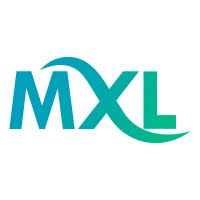
Joshellis1053
Uploaded on Aug 28, 2025
Microlearning for Employee Training: A Step-by-Step Guide for a Modern Workforce In an era of shrinking attention spans and information overload, traditional training models are proving to be inefficient. Employees are often pulled away from their daily tasks for long, unproductive sessions, leading to a lack of engagement and poor knowledge retention. Microlearning offers a powerful solution by delivering learning in bite-sized, digestible modules that are easy to consume and apply. For organizations looking to implement this modern approach, a clear, step-by-step guide is essential for success. Here is a practical, step-by-step formula for a successful microlearning strategy, tailored for diverse industries. Step 1: Identify Specific Learning Needs and Gaps Before you create any content, you must understand what your employees need to learn. Start by pinpointing specific knowledge gaps or areas where performance can be improved. Is it a new compliance regulation in Banking? A new safety protocol in Mining? Or a new product launch in Retail? A successful Microlearning Platform begins with a well-defined problem. By focusing on a single issue, you can create targeted, effective Microlearning Courses that directly solve a business challenge. Step 2: Break Down Content into Focused, Bite-Sized Units The core of microlearning is its brevity, but "short" isn't the only metric. Each module should have a singular, clear learning objective. For a Pharma company, instead of a module on "clinical trial regulations," a micro-module would focus on "The Correct Way to Fill Out a Patient Consent Form." This singular focus prevents cognitive overload and makes the information easy to absorb and recall later. Step 3: Choose the Right Tools and Technology A successful microlearning program requires a robust technology stack. First, select a Microlearning Platform that can host and deliver a variety of content formats. A powerful Microlearning LMS will manage user accounts, track progress, and provide a central hub for all your training materials. You'll also need effective Microlearning Authoring Tools to create the content itself. The latest platforms, featuring an AI-powered Authoring Tool, can significantly speed up this process by converting existing documents and presentations into engaging, interactive modules, saving valuable time and resources. Step 4: Design for Engagement with Diverse Formats To keep learners engaged, you must go beyond simple text. A great Microlearning Platform supports a wide range of formats, including short videos, interactive quizzes, infographics, and gamified scenarios. A Health care professional, for example, might benefit from a 2-minute animated video demonstrating how to use a new piece of equipment. An Insurance agent could get a brief podcast on a new sales tip while commuting. This variety caters to different learning styles and makes the training experience more dynamic and enjoyable. Step 5: Ensure Just-in-Time Accessibility Microlearning is most powerful when it's available exactly when and where a learner needs it. A well-designed Microlearning Application allows for on-demand, mobile access. This is particularly crucial for employees in the field, such as those in Oil and Gas, who might need a quick refresher on a safety checklist before a task. This "just-in-time" learning makes knowledge a resource for on-the-job problem-solving, rather than a separate, scheduled event. A great Microlearning Software solution will ensure seamless access on any device. Step 6: Measure Impact and Refine with Data Finally, a microlearning strategy must be data-driven. A good Microlearning LMS provides comprehensive analytics that track learner engagement, quiz scores, and completion rates. Use this data to measure the effectiveness of your training and identify areas for improvement. For instance, if you notice that a specific module has a low completion rate, you can analyze its content and format and make necessary changes. An AI-Powered Learning Platform can even use this data to automatically adapt content for individual learners, creating a truly personalized experience. This continuous cycle of measuring and refining ensures that your microlearning program remains relevant, impactful, and contributes directly to business goals. By following this step-by-step guide, any organization can successfully implement a microlearning program that not only streamlines employee training but also fosters a culture of continuous learning and growth.

Comments